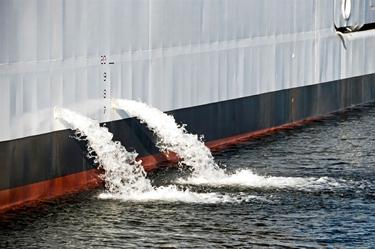U.S. Ballast Water Management – Final Rule on Discharge Standards

The U.S. Coast Guard Final Rule on Standards for Living Organisms in Ships' Ballast Water Discharged in U.S. Waters was published in the Federal Register on 23 March 2012.
The rule establishes a standard for the allowable concentration of living organisms in ships’ ballast water discharged in waters of the United States. The new Ballast Water Discharge Standard (BWDS) is protective of the marine environment and is also consistent with the discharge standard adopted by the International Maritime Organization (IMO) in 2004.
The rule also:
- Authorizes several Ballast Water Management methods, including the installation and use of a Coast Guard approved ballast water management system (BWMS).
- Establishes a process for Coast Guard type approval of ballast water management systems and
- Includes Alternate Management System (AMS) provisions which permit a vessel to meet the existing ballast water exchange requirement through the use of a BWMS approved by a foreign administration. For a BWMS to be considered under the AMS provisions, it must be installed prior to the vessel’s mandatory compliance date. The vessel may employ the AMS for no more than five years from the date it would otherwise have been required to comply with the discharge standard.
The New Ballast Water Management Discharge Standard (BWDS)
(1) For organisms greater than or equal to 50 micrometers in minimum dimension: discharge must include fewer than 10 living organisms per cubic meter of ballast water.
(2) For organisms less than 50 micrometers and greater than or equal to 10 micrometers: discharge must include fewer than 10 living organisms per milliliter (mL) of ballast water.
(3) Indicator microorganisms must not exceed:
(i) For Toxicogenic Vibrio cholerae (serotypes O1 and O139): a concentration of less than 1 colony forming unit (cfu) per 100 mL.
(ii) For Escherichia coli: a concentration of fewer than 250 cfu per 100 mL.
(iii) For intestinal enterococci: a concentration of fewer than 100 cfu per 100 mL.
Scope of Application
In addition to those vessels currently required to conduct mid-ocean ballast water exchange, the BWDS will apply to seagoing vessels that do not operate beyond the U.S. Exclusive Economic Zone, that take on and discharge ballast water in more than one Captain of the Port (COTP) Zone, and are greater than 1,600 gross register tons.
The first vessels to which the new ballast water management requirements will apply are new vessels constructed on or after 1 December 2013, for which the compliance date is the date of delivery - see table below. (The only new requirement for which compliance is actually required from 21 June 2012 is the incorporation of vessel-specific Biofouling Management and Sediment Management Plans in the already required vessel Ballast Water Management Plan.)
Compliance Schedule
Although the new BWDS became effective on 21 June 2012, the required use of an approved BWMS will be phased-in and not required until after December 2013. The phase-in schedule is dependent on vessel build date, ballast water capacity, and drydock schedule:
Implementation Schedule for Ballast Water Management Discharge Standards for Vessels Using Coast Guard Approved Ballast Water Management Systems
Vessel's ballast water capacity Date constructed Vessel's compliance date
New vessels
All
On or after 1 December 2013.
On delivery.
Existing vessels
Less than 1500 m3
Before 1 December 2013.
First scheduled drydocking after 1 January 2016.
1500-5000 m3
Before 1 December 2013.
First scheduled drydocking after 1 January 2014.
Greater than 5000 m3
Before 1 December 2013.
First scheduled drydocking after 1 January 2016
Guidance
NVIC 07-04 Change 1- Ballast Water Management for the Control of Aquatic Nuisance Species in the Waters of the United States - together with the Coast Guard’s Implementation of a Ballast Water Discharge Standard notice of 21 June 2012 (both available via the Coast Guard Ballast Water Management webpage – see Resources below) will serve as interim guidance pending an update/amendment to NVIC 07-04 Change 1.
Enforcement
Enclosure 4 to NVIC 07-04 Change 1 sets out a range of enforcement tools available to those monitoring compliance which allows them to deal with minor first time infringers all the way through to serious and persistent offenders. These include:
- Verbal Education
- Letters of Warning
- Notice of Violation
- Administrative Civil Penalty (upto $35,000 per day;each day of violation constitutes a separate violation)
- COTP orders
- Suspension and Revocation
- Criminal Proceedings
Resources
The dedicated Ballast Water Management page on the Coast Guard website provides further helpful information on this important subject, including record keeping and reporting requirements, with links to relevant legislation, guidance and a Frequently Asked Questions document which is updated on a regular basis : www.uscg.mil/hq/cg5/cg522/cg5224/bwm.asp
Final rule of 23 March can be found on the Federal Register website at: www.gpo.gov/fdsys/pkg/FR-2012-03-23/pdf/2012-6579.pdf.


